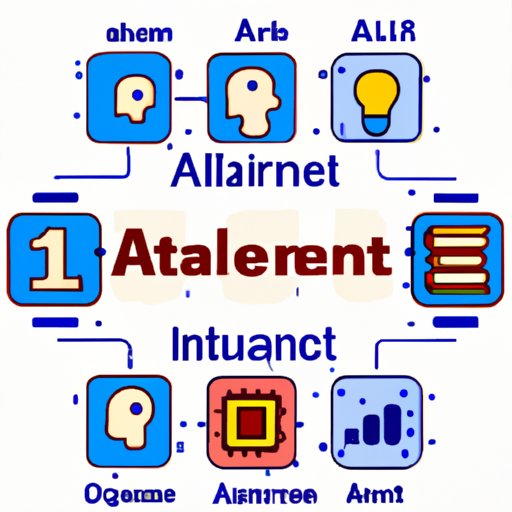Introduction
When it comes to Artificial Intelligence (AI), many people feel intimidated by its complexity. But understanding the basics of AI is not as difficult as it first appears. With the right knowledge, you can learn how to make the most out of AI and use it to your advantage. In this article, we will explore the basics of AI and discuss how to get started with it.
Understand the Basics of AI
Before we dive into the details of getting started with AI, let’s take a step back and look at what it is. AI is defined as “the capability of a machine to imitate intelligent human behavior”. It is an interdisciplinary field that combines computer science, mathematics, psychology, neuroscience, and engineering to create machines that can think and act like humans.
There are two main types of AI: narrow AI and general AI. Narrow AI, also known as weak AI, focuses on one task or problem and is designed to solve specific problems. Examples of narrow AI include voice assistants such as Alexa, self-driving cars, and facial recognition systems. On the other hand, general AI, also known as strong AI, is a type of AI that can think, reason, and make decisions like humans. This type of AI does not yet exist, but researchers are working on it.
The benefits of AI are numerous. It can be used to automate tedious tasks, improve decision-making processes, and increase efficiency in various industries. AI can also help us better understand the world around us and uncover insights that would otherwise be impossible to find.
Research Popular AI Tools
Once you have a basic understanding of AI, it’s time to start researching popular AI platforms. There are many AI platforms available, each with its own strengths and weaknesses. Some popular platforms include Google Cloud AI, Microsoft Azure Machine Learning, Amazon Web Services, IBM Watson, and TensorFlow.
When evaluating these platforms, consider factors such as cost, ease of use, scalability, and features. For example, Google Cloud AI offers a wide range of features, including natural language processing and image recognition. However, it is more expensive than other platforms. On the other hand, Amazon Web Services is less expensive but has fewer features.
Set Clear Goals
Before you start using AI, it’s important to set clear goals. Ask yourself what you want to achieve with your project. Are you trying to improve customer service? Increase sales? Automate a process? Defining your objectives will help you focus your efforts and ensure that you don’t waste time on unnecessary tasks.
In addition to setting objectives, you should also establish a timeline for completing your project. Make sure to set realistic deadlines and break down large tasks into smaller steps. This will help you stay on track and keep your project moving forward.
Choose a Data Set
Once you have your goals and timeline in place, it’s time to find a suitable data set. A data set is a collection of data that can be used to train an AI model. When choosing a data set, look for one that is relevant to your project and contains enough data points to accurately predict outcomes. You should also consider the quality of the data and make sure it is up-to-date.
Once you have found a suitable data set, you need to prepare it for analysis. This involves cleaning the data and transforming it into a format that can be used by an AI model. Depending on the size and complexity of the data set, this process could take some time.
Develop a Model
Once you have prepared the data set, you can start developing a model. An AI model is an algorithm that uses data to make predictions or decisions. There are many different types of AI algorithms, so it’s important to research them and choose one that is suitable for your project.
Once you have chosen an algorithm, you need to train the model. This involves feeding the data to the model and adjusting the parameters until the model can accurately predict outcomes. Depending on the complexity of the model, this process could take some time.
Test and Evaluate
Once you have trained the model, it’s time to test it. Testing involves feeding the model new data and evaluating its performance. This will help you identify any errors or weaknesses in the model and make adjustments as needed.
Once you have tested the model, you should evaluate its performance. Look at the accuracy of the predictions and compare it to the expected results. If the model is performing well, you can deploy it into production. Otherwise, you may need to adjust the model and retrain it.
Conclusion
Getting started with AI can seem daunting, but with the right knowledge, you can make the most out of it. Start by understanding the basics of AI, researching popular AI platforms, and setting clear goals. Then, choose a suitable data set and develop a model. Finally, test and evaluate the model to ensure it is performing as expected. With these steps, you can get started with AI and unlock its potential.
(Note: Is this article not meeting your expectations? Do you have knowledge or insights to share? Unlock new opportunities and expand your reach by joining our authors team. Click Registration to join us and share your expertise with our readers.)
